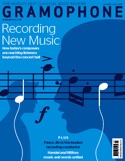Texte paru dans: / Appeared in: |
|
|
Outil de traduction (Très approximatif) |
|
|
Reviewer: Richard Wigmore
CPE Bach’s two sets of ‘Hamburg’ symphonies from the 1770s have long been famous for pushing the contemporary musical language to the brink. No other orchestral music of the period, not even Haydn’s so-called Sturm und Drang symphonies, is so consistently disruptive. Bach’s long-range control ensures that chaos is ultimately averted, but it’s a close shave. The symphonies Bach composed two decades earlier in Berlin are far less familiar. Yet the E flat (Wq179), from 1757, is hardly less disturbingly outré than the Hamburg works. The Prestissimo first movement continually wrong-foots the listener with its manic outbursts and weird dislocations, while the contorted, chromatic Larghetto mines CPE’s characteristic vein of brooding Empfindsamkeit. Only the exuberant ‘hunting’ finale suggests anything approaching stability.
Galant decorum simply won’t do in CPE. Not that the OAE needed reminding in these vividly recorded performances from the Queen Elizabeth Hall. Under Rebecca
Miller’s inspiriting direction, the crack players tear into the fast movements with disciplined craziness. In the two Hamburg symphonies with wind (Wq183), the orchestra’s tigerish attack and cumulative energy eclipse even the performances they recorded with Gustav Leonhardt in the 1990s (now on Warner Classics, 8/90). The players make you unusually aware of the tense contrapuntal friction between violins and basses, the latter both weighty and athletic. Horns glint and holler through the manic, seething tuttis; flutes and oboes proffer glimpses of precarious calm.
The two Hamburg string symphonies (Wq182) are just as exciting. Antiphonal violins spar edgily, offset by fleeting moments of yearning lyricism. I can’t recall hearing such a viscerally thrilling performance of the finale of the B minor (No 5), with its firestorms and grinding, wailing suspensions. But these performances are not all about seismic shocks. Miller and the players think long, ratcheting up the tension towards Bach’s cadences. And they are closely attuned to the dark, febrile beauty of the slow movements, whether in the long, singing lines, eloquently shaped, of the B minor Symphony’s Larghetto or the shrouded viola-cello duet in the F major (Wq183/3). If you’re still a CPE novice, I can’t think of a better introduction to his brand of inspired eccentricity than these terrific, high-octane performances, live in every sense. |
|
|
|
|
|
Cliquez l'un ou l'autre
bouton pour découvrir bien d'autres critiques de CD |
|

/0635212039526.jpg)


